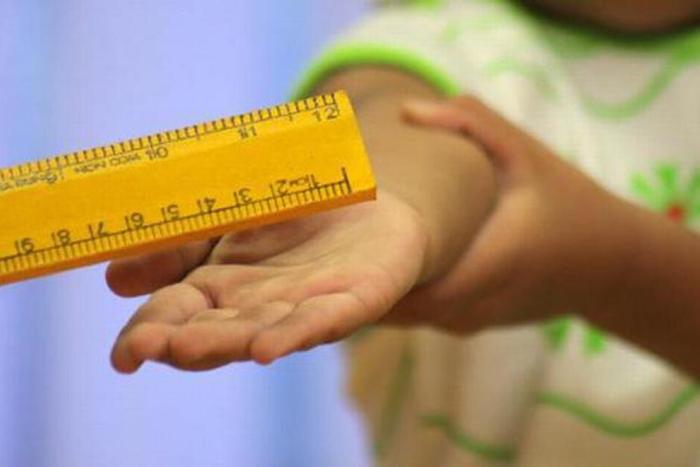“Given that I’ve barely read two books in my life that aren’t picture books,” writes Grace Coddington in the acknowledgments to Grace, “no one is more surprised than me that I have produced a memoir.”
No one who saw The September Issue, R.J. Cutler’s 2009 documentary on Vogue, is surprised at all.
Coddington has been American Vogue’s creative director for 24 years, having started on the same day as editor/feudal lady Anna Wintour. Cantankerous and camera-shunning, she refused to let Cutler’s crew film her. One day Anna insisted. Two years later she emerged as the film’s heart and star, a brilliant, still-passionate old-timer repping grand human decency in a hollowed-out world. (If you haven’t seen it, imagine David Carr in Page One with an insane Titian wig and ’20s references instead of tweets.)
In interviews, Coddington—who was raised in Wales and modelled in London and Paris before working at British, then American Vogue—seems pleased but freaked by her late-game fame. She can’t abide celebrities, so it must be strange to feel, as she facetiously writes, “like the Beatles.” She’s not really a celeb, though. Too pensive, too private, and decidedly not swag, “Amazing Grace”—her media sobriquet—is more like the protagonist of a Victorian novel.
Celebrities are gods we can demonize. But where Anna is feared, Grace is totally, justifiably, and internationally beloved.
I read Grace in a weekend, plus Monday. (You could do it in a day: It’s written simply in large type and there are lots of photos, not to mention her own charming illustrations. But when somebody has done a reluctant-if-ineluctable memoir at the age of 70, to rip through it feels a little crass. Take a few.)
Over the same weekend I saw a friend who, by his own declarations, is a total romantic. So am I, in a cunty sort of way. We talked relationships. I told him that in my life with men what I hate most is being idealized. I want to be a fully realized human being, if possible. Besides, there’s this lingering inequality: Women are idealized, men are idolized. Men like calling the women they love “perfect,” which is self-congratulatory and gross. They don’t tend to call women “heroic.” That’s the shame.
Two nights later I had finished Grace and was drinking a lot of wine and thinking about what I’d read. He was thinking about what I’d said. “I understand your problem with ideals,” he told me. “But how does that square with being romantic? Isn’t a huge part of romance idealizing the other person?”
Now that I’m sober, no, it isn’t, and Grace is a great romance—in the earliest, French sense of the word—for exactly that reason. Grace is not about another person. It’s not about any of the men she dated, married, divorced, and now describes in absurdly dispassionate terms. “It was all highly contemporary, exquisitely photogenic, utterly enviable domestic bliss,” she says of her 1968 marriage to the restaurateur Michael Chow, “until I fell in love with someone else.” Her current, long-term husband is introduced as “the hairdresser Didier Malige.”
Nor is it even about Grace herself, described almost entirely via what she wore, or how she did her makeup, which she stripped off forever as soon as she stopped modelling, or the photographs she liked (on a 1950s shot of Audrey Hepburn in her apartment:“I aspired to live in exactly that same perfect way”). Even when she lists her own traits, it’s as though she is watching herself in a movie: “I was being offbeat,” she’ll say, not “I was offbeat.” Or she’ll quote something Anna, or Didier, said about her.
Partly this is stiff-upper-lipped diffidence. Partly it’s her susceptibility to the chimeric nature of narrative, maybe even truth itself. “Without a little drama,” she says of one controversial Peter Lindbergh shoot in Vogue, “how can it look like real life?”
And so Grace is a story about the stories she has told.
These daydreams are more revealing, and more fascinating, than most of the facts. Coddington was one of the most avant-garde—and remains the most savant-ish—of American fashion legends since Diana Vreeland. Unlike the late legend, though, Coddington’s not fancy or aphoristic or even particularly opinionated. She’s just committed. My favourite scene in the book is when, during an outdoors shoot in the British Vogue years, she attempts to dye the sea bluer. Or when she goes to China in the ’70s, carrying loads of ornately Orientalized clothes to shoot and revealing herself to be as fantastically insular as Vreeland (and so many fashion people—even now). Upon seeing that most of the citizens dress in clinical, highly modern clothes, however, she gleefully chucks the Chinoiserie and starts over, making her ignorance seem more like innocence, or redeemed by sensitivity.
“Grace comes from this world where fashion is play and make-believe,” says Sally Singer in The September Issue. “It’s as if someone’s gone to the dressing-up box and found the most wonderful and personal things and put them together. But it’s beautiful.”
And it really is make-believe, not—when Coddington can help it—the callow manufacturing of ideals. No good characters are ideals, and her characters are, as Singer says, the best.
No good romantic idealizes what she loves.
“Rule number one is to make the picture beautiful and lyrical or provocative and intellectual—but you still have to see the dress,” she writes. “Of course, I like to push the boundaries... But you can’t forget to show the clothes and, in the end, not alter them beyond recognition; to pretend a dress is something it is not is unfair to the reader, too.”
She’s the same about faces and bodies, eschewing too much makeup or calling Botox “poison” and “mad!” In The September Issue, she used one of the cameramen in a shot, then refused to let Anna have him Photoshopped.
“Everybody isn’t perfect in this world,” she tells him. “It’s enough that the models are perfect.”
I hate how glossy and sharp and celebrified and fucking boring Vogue has become, making Coddington’s nostalgic disdain for the digital (her assistant prints out every one of her emails) a sympathetic trait (okay, maybe not). Usually, when old people write Slate articles like “e-reading isn’t reading blah blah blah 70 grafs about St. Augustine then some metaphysical hackery plus Faust reference I got from Stephen Marche’s bathroom” I get very mean on Twitter about it, and yes, Coddington’s insistence on doing things by hand is similarly atavistic.
Of a recent photo shoot, she writes: “Only the real subject’s head would be featured, grafted onto the stand-in’s shoulders thanks to the science-fiction wonders of Photoshop. Unbelievably shocking.”
More shocking than dying the sea blue?
Well, but here’s the difference, and it’s not film versus digital. It’s fantasy versus ideal. Led by Anna Wintour’s example, mainstream fashion media has swapped surreality, which you love but clearly see you can’t attain, for sleek, heavy simulacrum, which you’re manipulated into thinking you not only can but should. A bluer sea is fantasy. Bluer eyes are ideal.
Set here, against Vogue’s disturbed new reality, Grace makes Coddington less a celebrity than a heroine of fiction: Not of her life, but of the lives she let us borrow.
--
Photo by La'J





